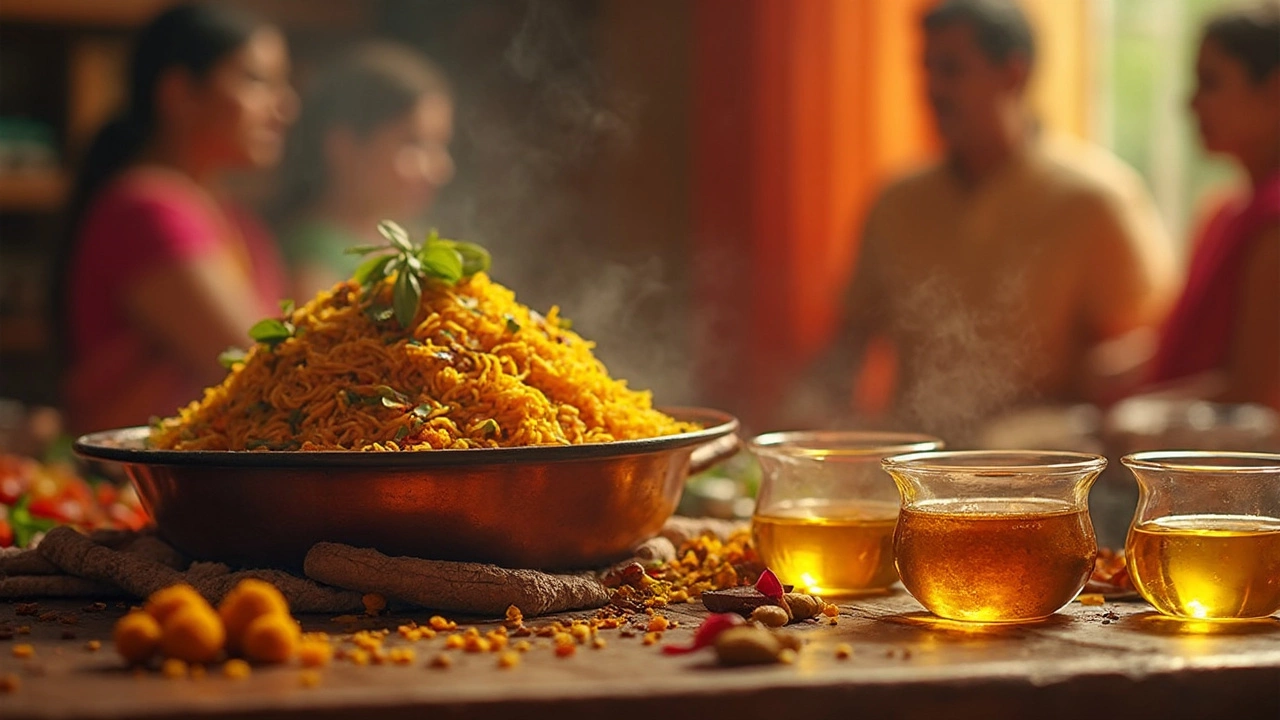Biryani Oil: How to Pick the Right Oil for Amazing Biryani
When you start a biryani, the oil you use is the silent hero. It carries the spices, gives the rice a glossy finish, and decides if the dish feels rich or heavy. Picking the right oil isn’t rocket science, but it does need a few basics.
What Types of Oil Work Best?
Ghee – Pure butter clarified of milk solids. It has a high smoke point (about 250°C) and a buttery, nutty aroma that blends perfectly with biryani spices. Most traditional recipes swear by it.
Mustard Oil – Popular in South Indian and Bengali biryanis. Its pungent flavor adds a punch, and it handles high heat well. If you’re not used to its strong smell, start with half the amount and mix with a neutral oil.
Coconut Oil – Gives a subtle tropical note, great for coastal biryanis that feature seafood or coconut milk. Use refined coconut oil if you don’t want the coconut taste to dominate.
Sunflower or Canola Oil – Neutral taste, high smoke point, and budget‑friendly. They won’t add any extra flavor but will let your spices shine.
Olive Oil – Extra‑virgin olive oil burns quickly, so it’s not ideal for the high‑heat fry step. Light olive oil can work for the final drizzle, but keep the heat low.
Tips for Using Oil in Biryani
1. Heat Before Adding Spices: Warm the oil until it shimmers, then toss in whole spices (cinnamon, cloves, bay leaf). This releases their oils and prevents burning.
2. Don’t Overcrowd the Pan: Too many ingredients will drop the temperature, turning the oil into a soggy mess. Cook onions and garlic in batches.
3. Balance Richness: If you love ghee’s flavor but worry about calories, blend half ghee with a neutral oil. You keep the taste without the heaviness.
4. Watch the Smoke Point: When frying onions until golden brown, you need oil that can stand 180‑200°C. Ghee, mustard, and refined coconut are safe bets.
5. Finish with a Drizzle: A spoonful of melted ghee over the layered rice right before the final steam adds shine and a fragrant lift.
Now that you know the options, experiment. Start with a classic ghee‑only biryani, then try a half‑mustard, half‑sunflower mix for a different edge. The right oil can turn a good biryani into an unforgettable one.
Which Oil Is Best for Biryani? Find Out What Really Works
Ever wondered which oil is actually best for biryani? This guide compares popular options like ghee, sunflower oil, and mustard oil, weighing their flavor, smoke points, and health factors. Learn how oil choices impact your biryani’s aroma, texture, and taste. Find tips to match the oil to your cooking style and dietary needs. Pick the perfect oil and make every biryani memorable.
